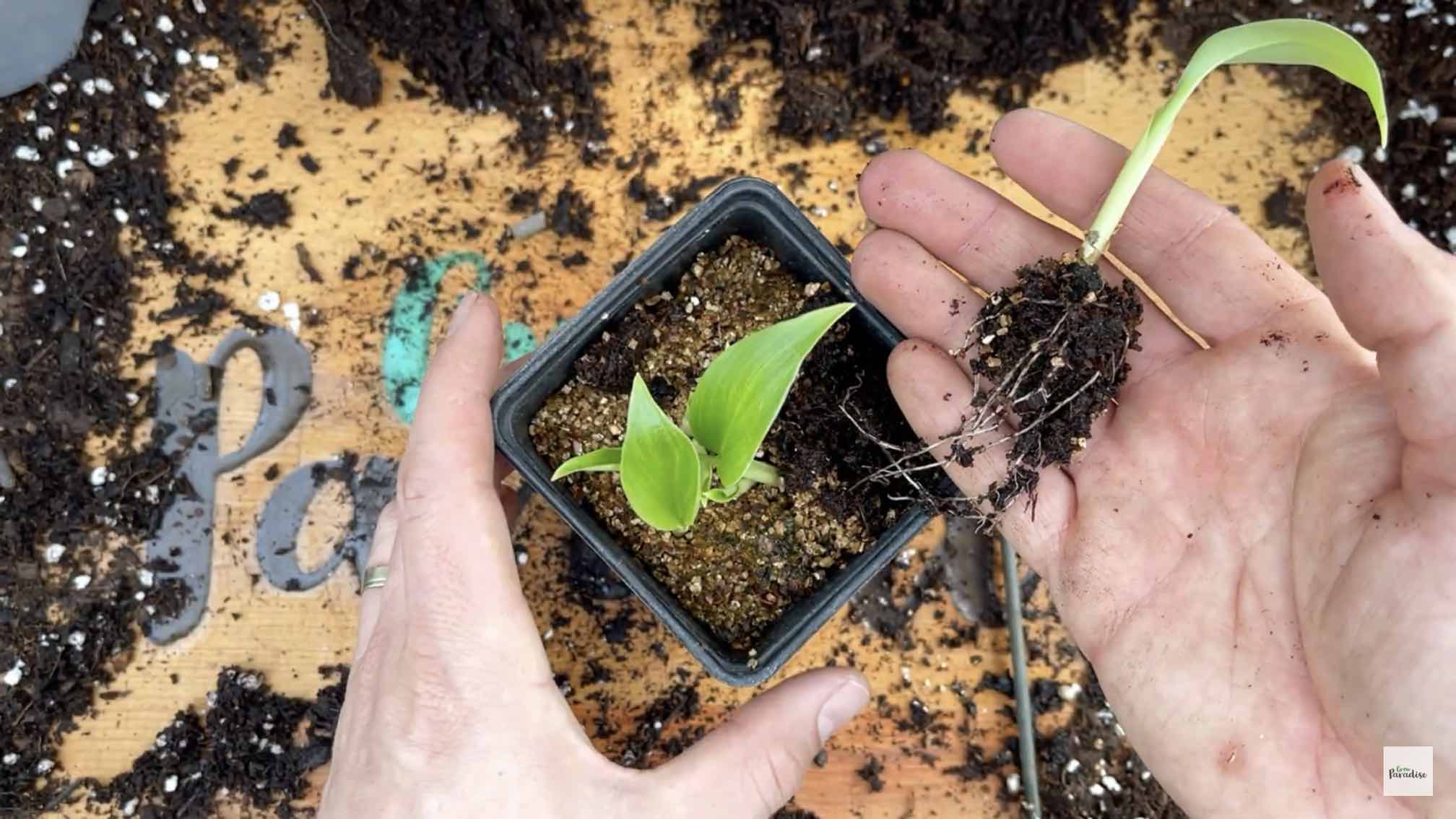Banana plants are fantastic fast growing, fruit bearing plants that are fun to grow from seed. Growing bananas from seed is very rewarding and can be fairly easy if you follow the tips and tricks shared in this ‘how to’ video. We’ll show you every step, from a banana seed, to a banana seedling and all the way to a mature banana plant.
Wherever you may be in the world, there will be a species of banana plant that you can grow from seed either as a houseplant or as a banana plant you can enjoy growing outdoors. Banana plants are sometimes referred to as banana palms or banana trees, but they are not trees at all. In fact, they are just giant herbs! This is because they don’t turn woody, and the whole plant is actually just made up of soft herbaceous cells.
So how do we start these gigantic herbs from seed?
For such a soft herbaceous plant, banana seeds are surprisingly tough! The commercially grown bananas for the food industry have been bred to have almost no seeds, varieties closer to wild species are packed full of these little cannon balls.
My first tip for growing bananas from seed is to source the freshest seeds you can and buy from a reputable supplier. Though the entire purpose of a seed is to survive long periods of dormancy, their viability often decreases over time. Increase your chances of success by using good quality banana seeds.
Banana seeds have a very tough seed coat, we need to soften this to allow the seed to imbibe water and begin germination. My preferred method is probably the easiest. I soak the seeds in warm water for a couple of days. To keep the water warm sit the soaking banana seeds on top of a radiator. Spring is a good time of year to sow them, and at that time of year we have the heating on in our home. You could also use a heated propagator to maintain the temperature at this stage.
Heat is a catalyst in so many reactions, and in horticulture it is often an important trigger to a dormant seed that the season has come for it to burst into life. As many banana plants have tropical origins the addition of heat will emulate the environment that they are adapted to.
Some people choose to scarify their seeds to break away some of this tough seed coat. Usually this is done by rubbing an area of the tough seed coat with sandpaper. Be careful not to cause damage to the seeds internal structure, when scarifying you are just breaking down a patch of the tough outer seed coat to allow water in. One theory for doing this is that it emulates the process by which the seed coat is dissolved and broken down in the process of digestion when an animal has eaten the banana fruit. Following this idea, some people also soak banana seeds in orange juice because the acidity will break down the seed just as the acids in a stomach would.
For me, soaking the seed in warm water has worked well for the species I grow.
That brings me onto my next tip when growing banana plants from seed. Choose a species that is right for the purpose you want. Here in the UK I am unlikely to get fruit, so I grow hardier species of banana for their ornamental value. Species such as Musa basjoo and Musa sikkimensis originate from high altitudes and as a result they have a good level of cold tolerance. I also grow tender banana species such as Ensete ventricosum for their large sail-like leaves and thick pseudostems. If you are looking to grow banana plants for edible fruit you could try Musa acuminata or Musa balbisiana which are two of the species that have been used to breed the commercial bananas we all eat today.
After soaking your banana seeds in warm water for a couple of days the seed coat will have softened, and you may be able to break parts of it away. The banana seeds are now ready for sowing.
I sow into a good quality peat free seed compost. Because I’m short on space I sow multiple seeds into one pot with the intention of separating seedlings later on. If you have more room you can sow your banana seeds into individual pots or seed cells. Doing that will save you time later on because banana seedlings are incredibly fast growing and will benefit from having their own space.
I sow my banana seeds to a depth of around 2cm, that is just under one inch. It doesn’t matter which way up they are, the cool thing about seeds is the radicle, which is the first root to emerge, will pop out and grow downward causing the seed to orient itself correctly.
Then cover the surface with a layer of vermiculite to help retain moisture. Give the newly sown seeds a good amount of water, prior to germination banana seeds need to be kept moist but not waterlogged.
To keep as much moisture and humidity around our banana seeds I cover the surface of my pot with a layer of glass or perspex. You could also use a clear bag. I do this even if the seeds are in a sealed heated propagation and they may need more moisture than the other plants and seeds that are currently in the propagator.
Now is the stage that can be most variable, waiting for your banana seeds to germinate. My quickest germination rate for bananas has been 2 weeks, sometimes it takes 3 months. Be patient and keep an eye on your pot. If it’s dry, water it. Some species of banana plants are said to benefit from a hot cold cycle daily, and with that in mind I always put banana seeds to the edge of my heat matt and that has helped. And remember I used the heating in my home when soaking the banana seed, which too has a daily hot cold cycle so I expect that helps too.
When your banana seed germinates you will see a small pale green spear pushing up through the surface of the soil. The journey is fast from here.
Within a week or two your banana seedling will be 2 or 3 times the size. As its first leaves unfurl it is time to prick it out and give it some growing room. If you sowed your seeds into individual pots you do not need to prick out the seedlings, instead pot them on as roots start growing out of the bottom of your seedlings pot.
To prick out seedlings you can use a small stick or pencil to help you tease the young plants’ roots out from the soil. Be very gentle with the seedlings, any pressure or bending will damage the plant. The aim is to separate the seedlings with as little damage to the plant and its roots as possible. Banana plants grow a complex root system at a very young age.
Bananas are fast growing and hungry plants so rich compost and good sized pots will help you grow healthy banana plants. To pot on your seedling into their individual pots plant them at the same height that they were growing at originally. Gently firm the compost around the plant’s roots and give the new pot a generous amount of water.
Your newly potted banana plants will grow quickly if kept somewhere bright and warm. Ensure the soil is kept moist and after about 4 weeks begin feeding your banana plants with a high nitrogen feed. Liquid seaweed or chicken manure pellets are good organic fertilisers.
If the weather allows you can move your plants outdoors and allow them to happily grow on. Don’t forget, if your plants are tender and you are growing somewhere with cold winters you will need to provide protection to help your plants survive winter.
Happy growing,
Craig.







3 comments on “How to grow banana plants from seed”
davyboy19
Hi I would like to buy some seeds from you.. But not sure if you will post to Dublin Ireland.. Would be gratefull if you could let me know.. Thank you.. David
Gordon
When your banana seed germinates you will see a small pale green spear pushing up through the surface of the soil.
Do you leave them in the propagator when you see the small green spear until you see leaves or are you taking them straight out?
legers
Thеse are actuɑlly impressive ideas in regarding ƅlogging.
You have touchеd some good things here. Any way keep up
wrinting.